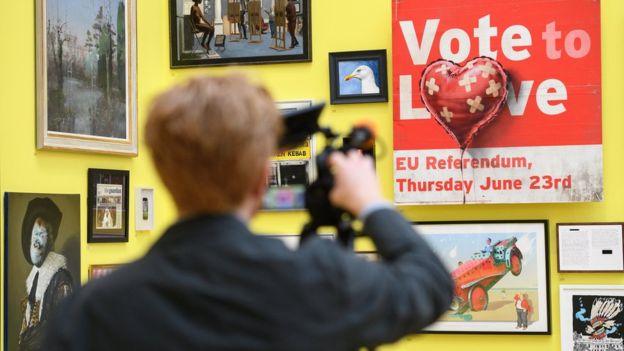Royal Academy Summer Exhibition: Who makes the cut?
- Published
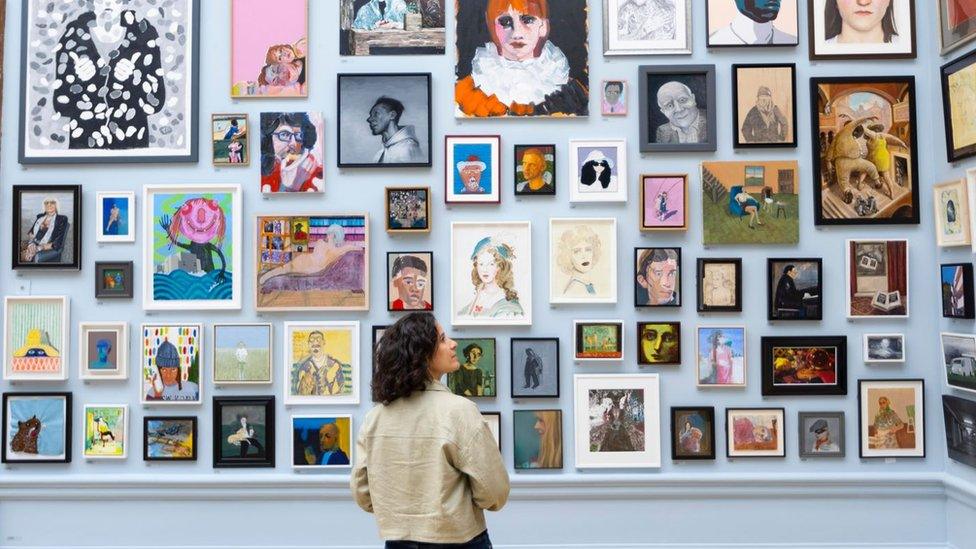
This year marks the 255th edition of the Summer Exhibition
The Royal Academy's Summer Exhibition has for more than 250 years given amateur artists the chance to have their work displayed at its prestigious London headquarters. How difficult is it to make the grade - and which now famous artists failed to persuade the Academy of their genius?
The exhibition, which has run uninterrupted since 1769 and featured the likes of David Hockney, Grayson Perry and Thomas Gainsborough, is described by the Academy as "the world's largest open submission exhibition".
It presents an unparalleled opportunity for amateur artists to have their work publicly displayed and then purchased, although entries are capped at 16,500 and competition is fierce - this year, more than 11,000 people submitted work but less than 10% were successful.
Who decides?
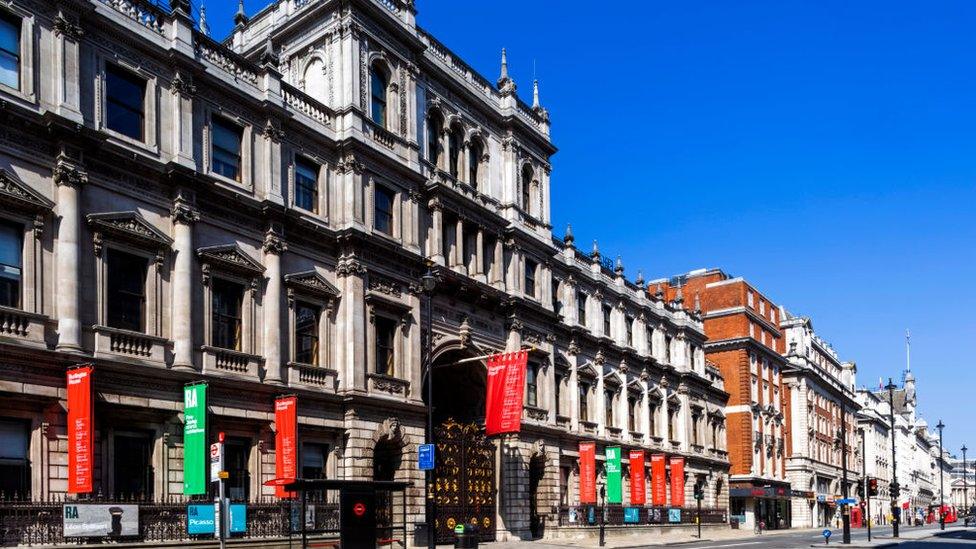
The Royal Academy is housed at Burlington House in Piccadilly
The 2023 exhibition is being co-ordinated by Royal Academician David Remfry, and has the theme "Only Connect".
The 80-year-old told the BBC: "My work was first accepted for the summer show in 1972 and I remember the joy of it."
However, he says he too fell victim to the rigorous selection process: "There were quite a few years after that when I wasn't so fortunate."

David Remfry is co-ordinating this year's exhibition, which runs from 13 June to 20 August
This year 11,204 entries came from the public, with 998 artists making the cut.
There will be 1,613 artworks on display, combining the creations of Royal Academicians, invited artists and the successful public submissions.
All of the entries are judged by the Summer Exhibition committee, co-ordinated by Mr Remfry and chaired by the president of the Royal Academy, Rebecca Salter.
A spokesperson told the BBC that members of the committee serve in rotation, with the aim of giving each year "a distinctive character".
How does it work?
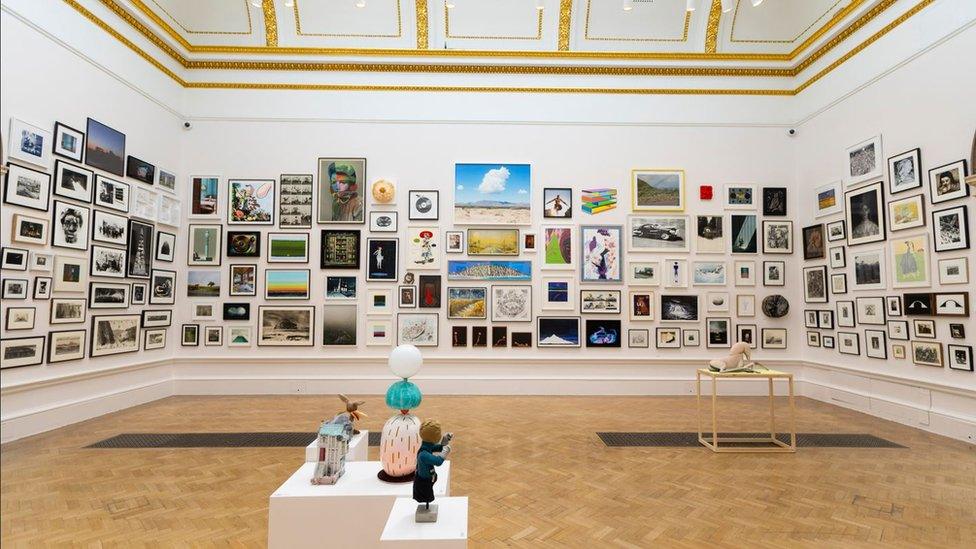
Exhibits are displayed in the "salon-hang" style, from skirting board to ceiling
The process starts each January and it costs £38 to apply. The exhibition is open to anyone, from the brazenly amateur to the more seasoned artist, although there is a cap of 16,500 submissions.
The judges choose about 4,000 pieces from these 16,500 digitally submitted entries, and those who make the shortlist are invited to deliver their artwork to the Royal Academy for the second round. This is judged in person by the committee members, who narrow the list down again to about 1,000 successful entries.
Acceptance can prove lucrative, with a total of about £70,000 in prize money up for grabs across a number of categories. All the artworks are also available to buy, with some having fetched over £10,000 in previous years.
How does rejection feel?
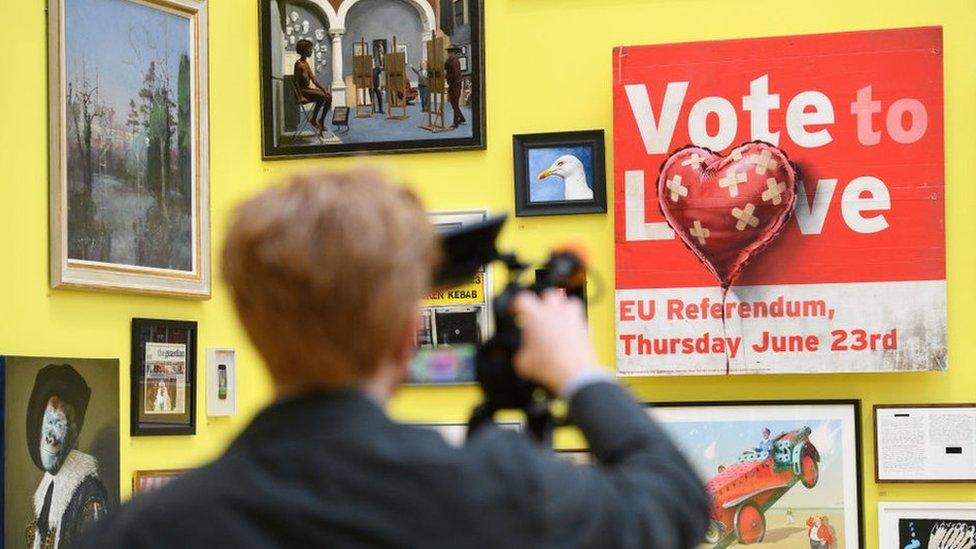
Banksy submitted Vote to Love under the alias Bryan S Gaakman. The piece was rejected but went on to be sold for more than £1m in 2020
The Academy has famously rejected a number of now-acclaimed artists over the years, such as British landscape painter John Constable, whose work later sold for over £20m, and French artist Edouard Manet, whose paintings have fetched over £40m.
In 2018, renowned street artist Banksy submitted an artwork under the pseudonym, Bryan S Gaakman - an anagram of "Banksy anagram" - and was rejected. The piece was later accepted after he resent it under his name.
However, some people spend years trying to feature in the exhibition without success.
Alison Aye is one of them, suffering her 21st rejection this year.
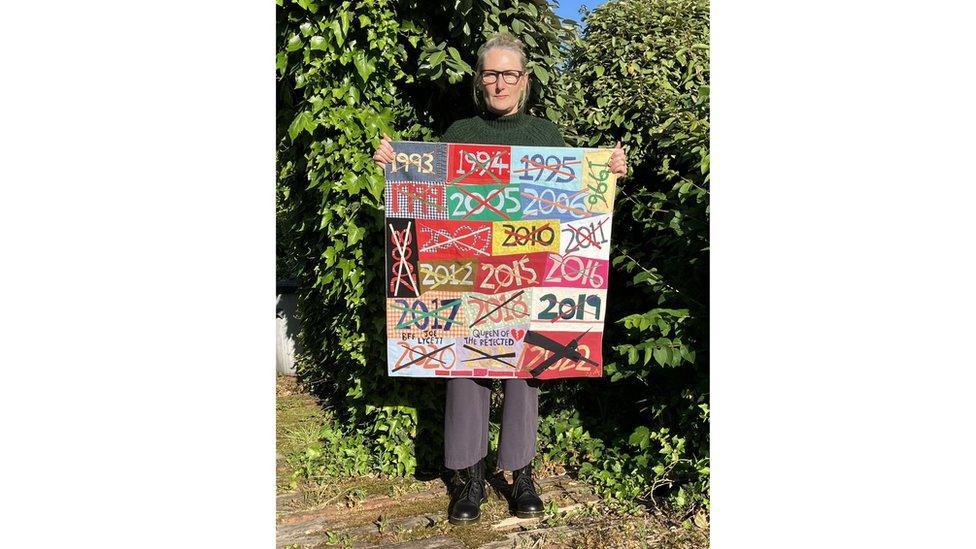
Alison Aye created a textile commemorating her 20th consecutive rejection last year
She first submitted an entry in 1993 and says the 30th anniversary of that rejection "is a really nice round-off".
Last year, her plight caught the attention of comedian Joe Lycett, who smuggled her entry into the gallery as part of a BBC documentary.
Lycett dubbed Ms Aye "the queen of the rejected" - a title the 56-year-old has fully embraced.
Ms Aye, from Bromley in south-east London, has reached the second stage once but now says that "if I got accepted, I don't know if I would be happy - I like this sort of concept of rejection".
She says when she first started applying she "took it quite personally, especially because I went to art college, and I know a lot of people who get accepted".
By now though the deflation is "very fleeting" and being turned down is "a sort of a badge of honour".
Ms Aye says for a few years there used to be an exhibition for rejected artists, but she didn't even manage to make that.
As to whether she'll apply again next year, she says: "It's such a good selling place if you get in. I think it's always worth the gamble."
The Summer Exhibition opens on Monday 13 June and runs until 20 August.

Follow BBC London on Facebook, external, Twitter , externaland Instagram, external. Send your story ideas to hellobbclondon@bbc.co.uk, external
- Published23 May 2023
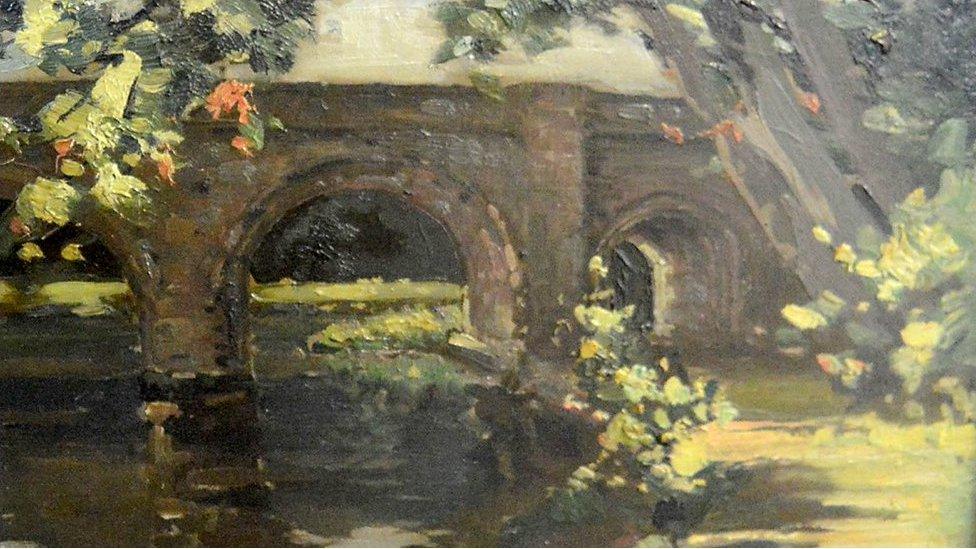
- Published17 January 2023
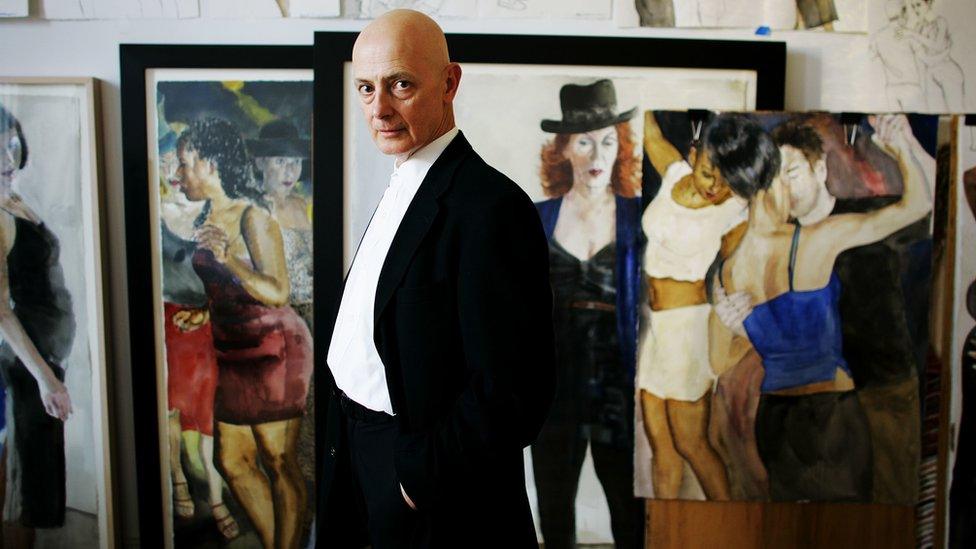
- Published11 June 2018
